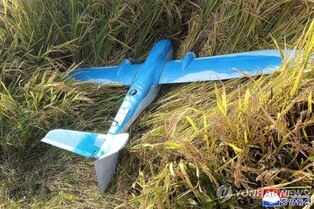*Editor’s note: K-VIBE invites experts from various K-culture sectors to share their extraordinary discovery about the Korean culture.
Choi Man-soon's Medicinal K-Food: Medicinal Cuisine: Ssam Bap
By Choi Man-soon, Food Columnist and Director of the Korea Traditional Medicine Food Research Institute
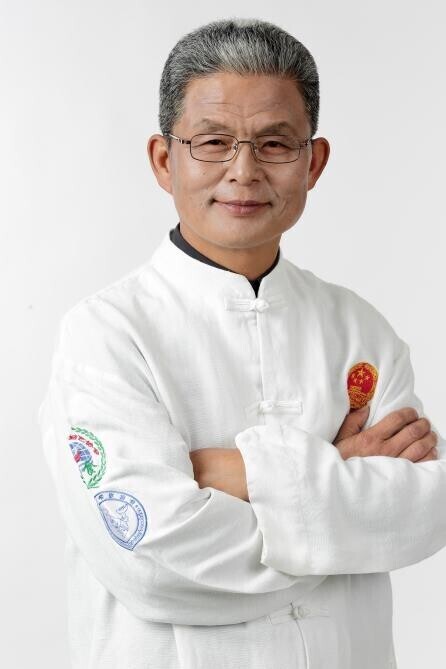
Wrapping food in leaves (ssam) is a longstanding tradition in Korea.
The love for ssam is so deep-rooted that there is even a designated day for eating it: "Bok Ssam" on the day of Jeongwol Daeboreum (the first full moon of the lunar year).
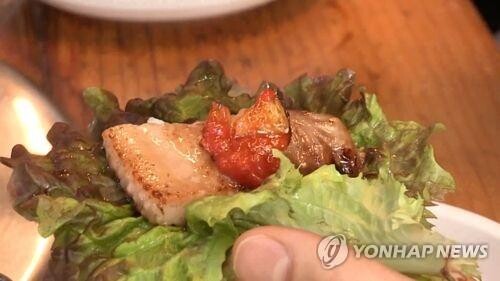
This practice is a grand ceremony, wishing for health, happiness, and a bountiful year, similar to the way Americans enjoy turkey dishes on Thanksgiving.
In 2022, Son Heung-min, an active player in the English Premier League (EPL), appeared on the YouTube channel "Korean Englishman," where he treated his teammates Eric Dier, Hugo Lloris, and Pierre-Emile Højbjerg to Korean-style wraps with meat and vegetables to celebrate his Golden Boot award. Eric and others quickly learned how to eat the wrapped meal, and the video reached over 10 million views.
 |
| ▲ Son Heung-min (right) makes lettuce wraps in this image captured from YouTube channel "Korean Englishman." (PHOTO NOT FOR SALE) (Yonhap) |
Wrapping food in ssam was the ideal way to preserve or transport food before the advent of modern packaging.
Almost any food could be wrapped in ssam.
In Japan, they typically eat aged fish sashimi with dipping sauce.
By contrast, in Korea, freshly caught live fish is sliced into sashimi and eaten wrapped in leaves.
◇ Memories of Rockfish
It was a long time ago. I visited Geoje Island with my wife for a vacation. We went fishing on a small boat owned by a local friend.
My wife, trying fishing for the first time, kept catching small rockfish as soon as she dropped her line into the water.
Our friend prepared fresh rockfish sashimi, and I made a special sauce with "eureum" (wild edible fruits).
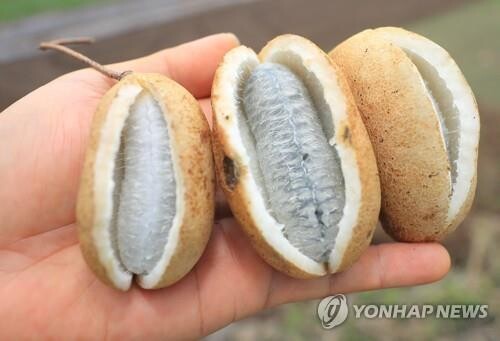 |
| ▲ This photo, taken on Sept. 30, 2021, shows fruits of akebia quinata, or "eureum" in Korean, in Jeju City, Jeju. (Yonhap) |
Our friend’s mother provided homemade soybean paste, to which I added red pepper paste and rice wine vinegar, and we found some ripe eureum on a hill behind the house.
Using the eureum pulp instead of sugar, I made a sauce. We picked plenty of lettuce from the garden and washed it at the courtyard spring for the wraps.
On a clear autumn day, we sat on the courtyard’s platform, placed two pieces of lettuce on our palms, added thick slices of rockfish, topped them with the sauce, wrapped it all up, and enjoyed a delicious meal.
Thinking of that taste still brings me happiness.
For reference, eureum is the fruit of the wild "moktong" plant, also known as "yejija" (予知子). When ripe, it becomes very sweet, and it is known for its insect-repelling properties and its ability to aid blood circulation.
◇ The Geography of Food
In the first chapter of Sun Tzu's The Art of War, there are five key factors for strategy, one of which is "geography" (di).
When it comes to food, di means understanding where ingredients are produced before preparing a dish.
This involves knowing not only the cardinal directions (north, south, east, west) but also the global origin of the ingredients.
While this used to be a localized concern, modern logistics allow access to products from anywhere in the world at local markets.
The growing environment—whether a plain, a mountain, a rocky area, or sandy soil—also affects the ingredients.
For example, ginseng grown in Korea has a slightly warm nature, while the Western ginseng from the U.S. or Canada, despite similar chemical composition, has a much cooler nature.
This is known in medicinal cuisine as dojiyakjae (道地藥材) or jidoyakjae (地道藥材).
In the Bencao Yan Yi (本草衍義), it is stated that "geographically specific medicinal ingredients have a direct impact on clinical outcomes." Therefore, medicinal cuisine practitioners need to select the appropriate medicine or food ingredients based on the context, making it a crucial guideline.
Common leafy vegetables used for wraps include lettuce, soybean leaves, aster scaber, pumpkin leaves, and napa cabbage, with seaweed leaves and dried seaweed also being used.
These vegetables can be eaten raw or blanched. The 19th-century Joseon-era cookbook Siui Jeonseo (是議全書) includes recipes for lettuce wraps and aster wraps using fresh leaves, while Gosa Sipijip (攷事十二集), written by the Joseon scholar Seo Myeong-eung and compiled by his grandson Seo Yoo-gu, records recipes for boiled or steamed aster wraps and perilla leaf wraps.
◇ Koreans’ Unique Love for Lettuce
Even today, many people enjoy eating wraps, and among the most popular ingredients is lettuce.
Lettuce has a long history of cultivation. It was depicted as a crop in ancient Egyptian pyramid murals around 4,500 BCE, and records show that it was served on the table of the Persian king in 550 BCE.
It was also cultivated as an important vegetable during the Greek and Roman eras. In China, lettuce first appeared in written records in 713 CE during the Tang Dynasty. While the exact timeline of its introduction to Korea is unclear, it is believed to have arrived in the 6th or 7th century through China and India.
Chinese records mention that Goryeo’s lettuce was known for its good quality and taste. With its long history, lettuce has diversified into many varieties.
These varieties are distinguished by leaf color, shape, size, heading, and stem type. Generally, lettuce is classified into head lettuce, butterhead lettuce, romaine, leaf lettuce, stem lettuce, and Latin lettuce.
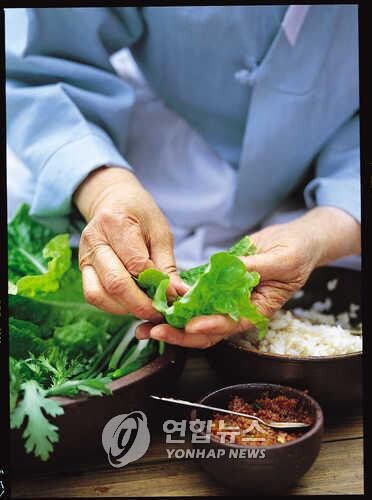 |
| ▲ The way lettuce wraps were consumed in the royal court differs from modern wraps. Ingredients like fish, meat, fermented soybean paste, rice, and dried shrimp were placed on an overturned lettuce leaf before wrapping. (Yonhap) |
While all six types are produced globally, Korea mainly cultivates head lettuce, romaine, and leaf lettuce.
In Korea, lettuce is typically used as a wrap vegetable, often served alongside meat.
Eating it with pork, in particular, is known to help inhibit cholesterol buildup, thus preventing arteriosclerosis.
In China, lettuce is sometimes stir-fried, while in Japan, it is lightly blanched before being seasoned.
Modern nutritional analysis shows that lettuce is rich in iron and essential amino acids compared to other leafy greens. As such, it helps increase blood volume and purify the blood, aiding in the prevention of low blood pressure. When a lettuce leaf is snapped, it releases a milky sap containing lactucarium, which helps calm the mind and alleviate stress, pain, and insomnia.
The saying that eating a lot of lettuce makes one sleepy is due to this calming effect, though it is temporary.
Over time, eating lettuce can actually clear the mind and relieve headaches. It is also high in fiber, which improves gut health and relieves constipation.
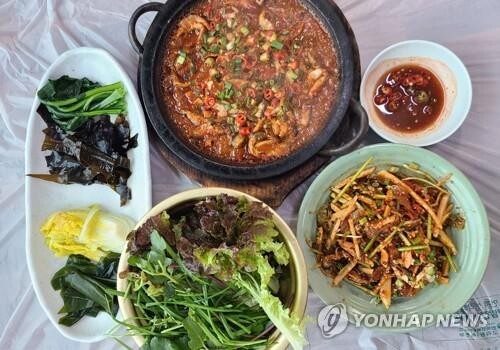 |
| ▲ Anchovy Wrap Rice (Yonhap) |
Lettuce's high water content and abundant vitamins A and C contribute to making the skin supple and elastic.
It can also help lower cholesterol levels. Its richness in folic acid and iron makes it an excellent food for pregnant women.
In medicinal cuisine, lettuce is characterized by its sweet and bitter flavor, cool nature, and its tendency to enter the stomach and small intestine. It helps promote urination, detoxifies harmful substances in the body, and inhibits the growth of cancer cells, thereby boosting immunity, particularly benefiting the liver and stomach.
It is commonly used to treat insomnia, obesity, and to protect vision.
However, people with cold body types, those with digestive disorders, or those who frequently urinate should consume it in moderation.
◇ Medicinal Ssam Bap
As an example of medicinal ssam, let’s look at yam and adlay ssam bap.
The ingredients include 70g of rice, 20g of yam, and 20g of adlay.
The preparation involves soaking the adlay in cold water overnight, while the rice is soaked for 30 minutes. Peel and slice the yam, then add everything to a pot with a pinch of salt (about 1g), and cook the rice. Once ready, enjoy the rice wrapped in lettuce with ssamjang (wrap sauce). This dish can help make skin more elastic in the dry autumn months and remove bad fats accumulated in the blood and body, thus preventing obesity.
Another medicinal wrap is croaker ssam bap. Ingredients include one croaker fish, 100g of spinach, 100g of rice, 2g of ginger, and a pinch of salt.
To prepare, soak the rice for 30 minutes, clean and chop the spinach, then add sliced ginger and salt to the pot and cook the rice. The croaker can be either grilled or simmered in soy sauce, then deboned. Wrap the fish with lettuce and serve with ssamjang.
This dish can help improve blood circulation and prevent ailments caused by the accumulation of moisture in the body.
While a hamburger might be considered passive, our Korean ssam is active. It allows for personal adjustment according to individual tastes or the mood of the day, adding various ingredients like meat, lettuce, ssamjang, perilla leaves, garlic, chili peppers, salted shrimp, or rice.
This combination of different ingredients in a wrap creates a form of medicinal cuisine.
Ssam, which can be mixed according to the body’s needs, helps to restore balance in the body.
It is a gradual way of becoming healthier from deep within.
There is no risk of side effects, and since it’s also delicious, it can be enjoyed continuously. That’s the charm of ssam.
(C) Yonhap News Agency. All Rights Reserved




















